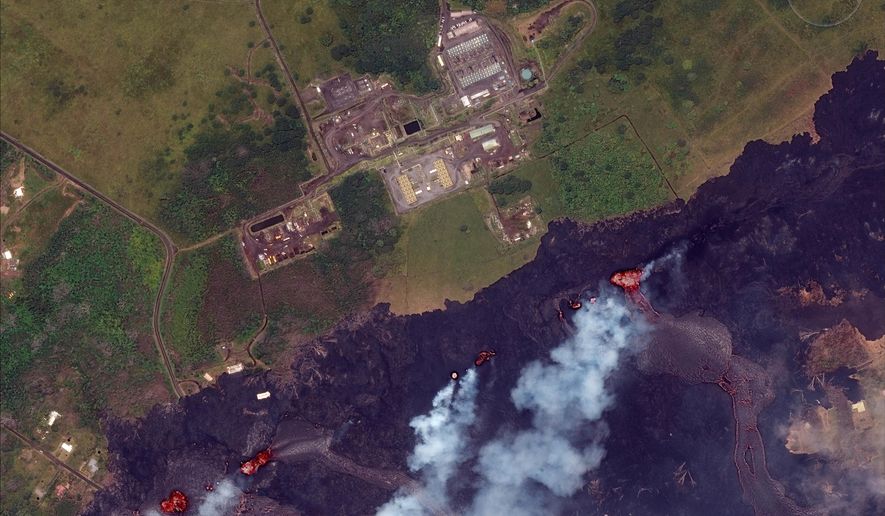HONOLULU (AP) - The Latest on the eruption of Kilauea volcano on Hawaii’s Big Island (all times local):
3:10 p.m.
Three lava flows from an erupting volcano are now flowing into the ocean off Hawaii’s Big Island.
Hawaii County officials say the third flow started pouring into the sea Thursday. Lava is spewing from a fissure in a rural community that’s feeding the two other flows that are reaching the waves.
Scientists say the Kilauea volcano isn’t letting up on its three weeks of wild activity. Besides the airborne shards of glass and acid formed when lava hits seawater, explosions at the summit are shooting up plumes of ash.
Ash is drifting onto communities downwind.
Most of Hawaiian Volcanoes National Park has been closed for two weeks over concerns about rocks that fall during the explosive eruptions.
___
12:25 p.m.
The U.S. Marine Corps is deploying two large transport helicopters to Hawaii’s Big Island in case a volcanic eruption forces large numbers of people to evacuate.
Hawaii officials have said they may need to carry out a mass evacuation if lava crosses key highways and isolates communities in the mostly rural part of the island where the Kilauea volcano is erupting.
A blocked highway would cut people off from their only route to grocery stores, schools and hospitals.
The Marine Corps said Thursday that it’s sent two CH-53E Super Stallion helicopters from a base near Honolulu to help. Each helicopter can carry 50 passengers.
Hawaii Army National Guard Brig. Gen. Kenneth Hara says the helicopters will allow an evacuation to be completed within a few hours.
___
10:30 a.m.
Ash has continued to spew out from the summit of a Hawaii volcano amid intermittent explosions.
Scientists said Thursday that ash emissions from Kilauea volcano on Hawaii’s Big Island reached 6,000 feet (1,828 meters) but quickly dispersed.
The ash is settling in small communities that are downwind. Trade winds are blowing the ash to the southwest.
Volcanic gas emissions at the summit remain high.
The high levels increase the potential for volcanic smog that’s called “vog.”
Emissions are also high at fissures that began opening up earlier this month in communities about 25 miles (40 kilometers) from the summit. Lava continues to erupt in two evacuated subdivisions.
___
12 a.m.
Scientists in Hawaii have captured rare images of blue methane flames burning from cracks in the pavement as Kilauea volcano gushes lava in the background.
The photos and video offer a look at a new dimension in the volcano’s weeks-long eruption.
The volcano produces methane when hot lava buries and burns plants and trees. The gas flows through the ground and up through existing cracks.
U.S. Geological Survey scientist Jim Kauahikaua (COW-ah-hee-COW-ah) told reporters it’s just the second time he’s ever seen blue flames during an eruption. He says it was dramatic and eerie.
The methane can seep through cracks several feet away from the lava.
Geological Survey scientist Wendy Stovall says the methane can cause explosions when it’s ignited while trapped underground. Blasts can toss rocks several feet.




Please read our comment policy before commenting.